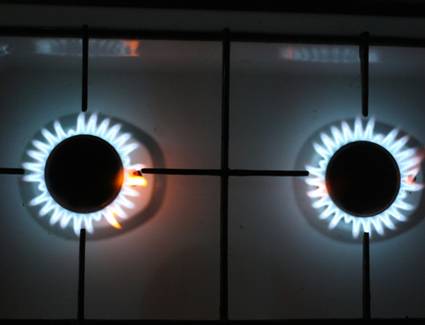
What Does Energy Efficiency Mean for Heating Stoves?
Energy efficiency in heating stoves is a measure of how much of the fuel’s energy is converted into usable heat for your living space, rather than being lost up the chimney or vent. Higher efficiency means more warmth, lower fuel costs, and reduced emissions.
- Measured as a Percentage: The higher the percentage, the more of the fuel’s energy is used for heating your home.
- Applies to All Fuel Types: Wood, pellet, gas, electric, and coal stoves all have efficiency ratings.
- Regulated in Many Regions: Efficiency standards are set by EPA and other agencies, especially for wood and pellet stoves.
Stove Efficiency Ratings by Type
| Stove Type | Typical Efficiency | Notes |
|---|---|---|
| Wood (EPA-certified) | 60–80% | Modern models use secondary combustion or catalytic converters |
| Pellet | 70–85% | Automated fuel & air controls boost efficiency |
| Gas | 70–90% | Direct vent models are most efficient; vent-free can reach 99% |
| Electric | ~100% (at point of use) | All electricity becomes heat, but grid generation is less efficient |
| Coal | 60–80% | Anthracite stoves are more efficient than bituminous models |
Note: Actual efficiency varies by model, installation, and maintenance. Always check manufacturer ratings.
How to Improve Stove Energy Efficiency
- Upgrade to EPA-Certified or Modern Stoves: Older wood stoves waste more heat and produce more smoke.
- Use the Right Fuel: Burn only seasoned, dry wood or premium pellets for best results.
- Maintain Proper Airflow: Clean vents, chimneys, and air inlets regularly to avoid blockages.
- Seal Doors and Gaskets: Prevent leaks that let warm air escape and cold drafts enter.
- Install Fans or Blowers: Distribute heat more evenly, reducing hot and cold spots.
- Insulate Your Home: Efficiency gains from the stove are wasted if your home leaks heat.
- Use Programmable Thermostats: On pellet, gas, or electric models to avoid overheating.
- Burn at Proper Temperatures: Avoid smoldering fires—hotter burns are cleaner and more efficient.
- Chimney Dampers: Use a damper to control draft when stove is off, preventing heat loss.
Efficiency Technologies & Features Explained
Secondary Combustion (Wood & Pellet Stoves)
Injects extra air above the fire to burn off smoke and gases that would otherwise escape as pollution, increasing usable heat.
Catalytic Combustors (Wood Stoves)
Channel exhaust through a ceramic honeycomb catalyst, allowing smoke to burn at lower temperatures for longer, steadier heat.
Direct Venting (Gas Stoves)
Seals combustion from the home air, drawing air in and venting exhaust outside through a coaxial pipe—boosts safety and efficiency.
Programmable Controls (Pellet, Gas, Electric)
Let you set temperature schedules, avoiding wasted energy and fuel when you’re away or asleep.
Energy Efficiency Regulations & Certifications
- EPA Certification (USA): All new wood and pellet stoves must meet strict emissions and efficiency standards. Look for the EPA label.
- Efficiency Ratings: Check for AFUE (Annual Fuel Utilization Efficiency), HHV (Higher Heating Value), or LHV (Lower Heating Value) on specifications.
- Local Codes: Many regions require stoves to meet minimum efficiency and emissions requirements—especially for wood and coal.
- ENERGY STAR: Some pellet and gas stoves may qualify for ENERGY STAR certification, indicating top efficiency.
Comparing Fuel Efficiency & Costs
- Firewood: Cheapest if self-supplied, but labor-intensive. Best efficiency with dry hardwood and a modern stove.
- Pellets: Consistent quality and burn rate; higher cost than wood but very efficient and convenient.
- Gas (Natural/Propane): Clean, efficient, and easy to control. Operating costs depend on local rates.
- Electricity: 100% efficient at home, but higher fuel costs for heating large spaces.
- Coal: High heat per pound, but local availability and cost vary. Anthracite is more efficient than bituminous.

Expert Tips for Getting the Most Heat Per Dollar
- Burn only the recommended fuel for your stove—don’t mix fuels or use trash/treated wood.
- Keep all stove and chimney components clean—soot and ash reduce heat transfer.
- Use zone heating: heat only the rooms you use, and close doors to unused areas.
- Install a ceiling fan to circulate warm air throughout your space.
- Seal windows and doors to keep cold air out and warm air in.
- Opt for a programmable thermostat or timer where possible.
Frequently Asked Questions: Stove Energy Efficiency
- How can I tell if my stove is efficient? Look for EPA or ENERGY STAR certification, and check the efficiency percentage in your stove’s manual or product label.
- Can I improve an older stove’s efficiency? Yes—by upgrading gaskets, installing a blower, burning only dry fuel, and having the chimney cleaned regularly. However, very old models may be worth replacing.
- Is it worth upgrading to a new, high-efficiency stove? In most cases, yes—especially if you use your stove as a primary heat source. Savings on fuel and increased comfort quickly offset the cost.
- Do efficiency improvements also lower emissions? Absolutely. More efficient stoves burn fuel more completely, releasing less smoke and harmful particulates.
Related Guides
Types of Heating Stoves
Compare the efficiency and features of wood, pellet, gas, electric, and coal stoves side by side.
Compare TypesEco-Friendly Stove Options
Learn about the greenest, most efficient stove technologies and renewable fuels.
Eco-Friendly OptionsStove Fuel Types
Compare the cost, efficiency, and environmental impact of all major stove fuels.
Fuel Comparison